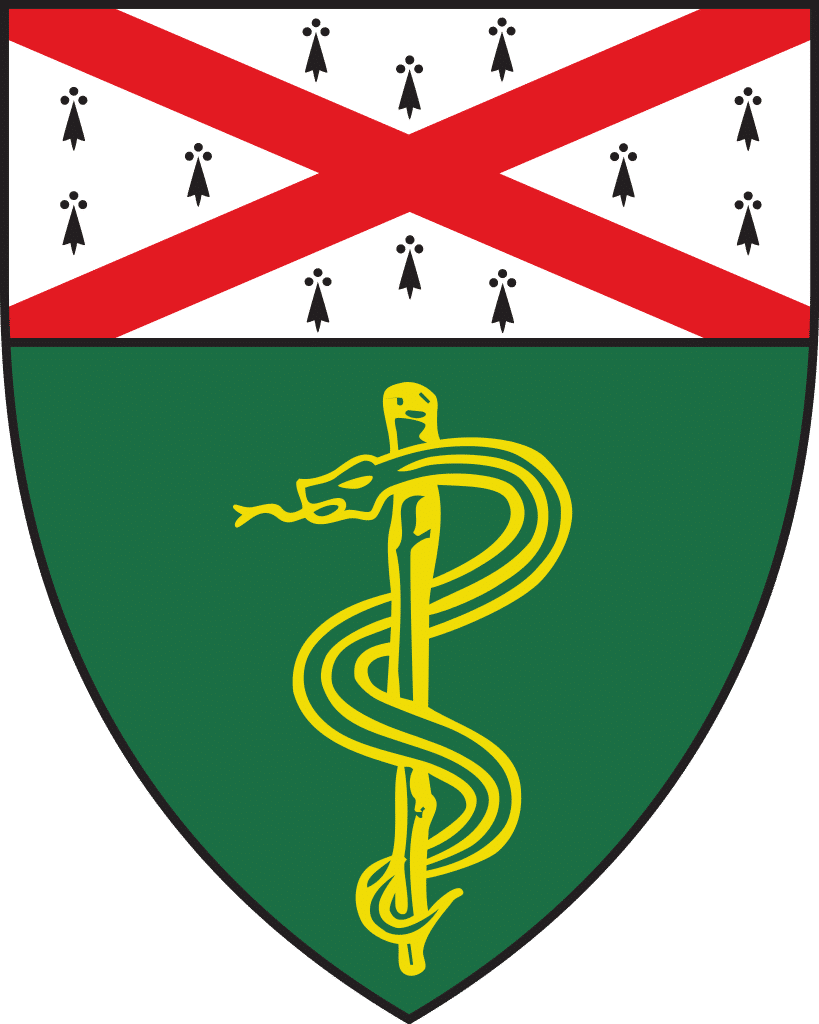预约演示
更新于:2025-05-07
ROBO2
更新于:2025-05-07
基本信息
别名 KIAA1568、ROBO2、roundabout guidance receptor 2 + [1] |
简介 Receptor for SLIT2, and probably SLIT1, which are thought to act as molecular guidance cue in cellular migration, including axonal navigation at the ventral midline of the neural tube and projection of axons to different regions during neuronal development. |
关联
2
项与 ROBO2 相关的药物作用机制 ROBO2 antagonists [+2] |
在研机构 |
原研机构 |
在研适应症 |
非在研适应症- |
最高研发阶段临床2期 |
首次获批国家/地区- |
首次获批日期1800-01-20 |
作用机制 ROBO1抑制剂 [+1] |
在研适应症 |
非在研适应症- |
最高研发阶段临床前 |
首次获批国家/地区- |
首次获批日期1800-01-20 |
2
项与 ROBO2 相关的临床试验NCT03448692
A PHASE 2, 24-WEEK, ADAPTIVE, OPEN LABEL, SEQUENTIAL COHORT TRIAL TO EVALUATE THE EFFICACY, SAFETY, TOLERABILITY AND PHARMACOKINETICS OF PF-06730512 FOLLOWING MULTIPLE DOSES IN ADULT SUBJECTS WITH FOCAL SEGMENTAL GLOMERULOSCLEROSIS (FSGS)
The purpose of this Phase 2 adaptive study is to evaluate the efficacy, safety, tolerability and pharmacokinetics of PF-06730512 following multiple intravenous infusions in adult subjects with FSGS.
开始日期2018-10-15 |
申办/合作机构 |
NCT03146065
A Phase 1, Randomized, Double Blind, Sponsor-open, Placebo-controlled, First-in-human Trial To Evaluate The Safety, Tolerability, And Pharmacokinetics Of Pf-06730512 After Single And Multiple Ascending Intravenous Infusion Or Subcutaneous Administration To Healthy Adult Subjects And An Open-label Evaluation In Healthy Japanese Subjects
The purpose of this study is to determine the safety, tolerability and pharmacokinetics of escalating single and multiple intravenous (IV) infusions and subcutaneous (SC) injections of PF-06730512 in healthy subjects.
开始日期2017-05-10 |
申办/合作机构 |
100 项与 ROBO2 相关的临床结果
登录后查看更多信息
100 项与 ROBO2 相关的转化医学
登录后查看更多信息
0 项与 ROBO2 相关的专利(医药)
登录后查看更多信息
377
项与 ROBO2 相关的文献(医药)2025-04-01·Cell Reports
A neuronal Slit1-dependent program rescues oligodendrocyte differentiation and myelination under chronic hypoxic conditions
Article
作者: Zhu, Yanqin ; Jia, Shufang ; Zhang, Liang ; Liu, Qi ; Xu, Shuhua ; Lu, Xiaoyun ; Lu, Jiaquan ; Lei, Wanying ; Dai, Wenxiu ; Sheng, Nengyin ; Huang, Qiuying ; Lu, Yan ; Li, Daopeng ; Zhang, Xueqin ; Xu, Ren ; Zang, Xiujuan ; Zheng, Liangkai ; Nian, Ximing ; Du, Ailian ; Hou, Yanqiang ; Xiao, Yunshan ; Zhou, Zhihao ; Qiu, Zilong
2024-11-20·Science Translational Medicine
Monoclonal antibodies that block Roundabout 1 and 2 signaling target pathological ocular neovascularization through myeloid cells
Article
作者: Thomas, Jean-Leon ; Zheng, Lana ; Xu, Yunling ; Robinson, Mark E. ; Song, Eric ; Leser, Felipe Saceanu ; Geraldo, Luiz Henrique ; Furtado, Jessica ; Mouthon, Gaspard ; Blazer, Levi L. ; Adams, Jarrett J. ; Eichmann, Anne ; Sidhu, Sachdev S. ; Zhang, Sophia
2024-07-01·Heliyon
Prognostic model of fibroblasts in idiopathic pulmonary fibrosis by combined bulk and single-cell RNA-sequencing
Article
作者: Zhao, Jiarui ; Zhang, Wei ; Jing, Chuanqing ; Fan, Rui
4
项与 ROBO2 相关的新闻(医药)2023-10-31
Pfizer is packing up three early-stage and two mid-stage pipeline programs to send out the door.
Pfizer’s new cost-saving agenda will see five pipeline programs in oncology, rare disease and immunology packed off to the graveyard.
Three of the terminated programs are phase 1 oncology assets, according to Pfizer’s online product pipeline, which was updated on October 31. First up in the discard pile is PF-06647020, a non-small-cell lung cancer (NSCLC) biologic that was assessed in an early-stage trial of 138 patients that read out in 2019, according to ClinicalTrials.gov.
Another NSCLC hopeful, the CD47-PD-L1 bispecific antibody PF-07257876 is being terminated days after a phase 1 study of 28 patients with selected advanced or metastatic tumors wrapped Oct. 24, according to ClinicalTrials.gov. Evidently, Pfizer didn’t like what it saw and tossed the bispecific in the bin.
The last early-stage cancer med to get the boot is PF-07265028, a small molecule candidate designed for patients with solid tumors. In a trial with a primary completion date set for 2026, PF-07265028 was being studied as monotherapy and in combination with Pfizer’s investigational monoclonal antibody sasanlimab.
Moving on to the mid-stage rejects is a rare disease candidate and eczema and psoriasis asset. The phase 2 study testing out PF-06730512 for patients with focal segmental glomerulosclerosis—which is scar tissue in the kidney—was terminated due to lack of efficacy at the end of 2022, according to ClinicalTrials.gov.
Lastly is PF-07038124, a small molecule candidate that was tested out in patients with atopic dermatitis (eczema) and psoriasis. The phase 2b study wrapped up this summer after testing out the ointment in 264 patients.
The culls come shortly after the Big Pharma announced a multi-year, enterprise-wide cost realignment program that aims to save at least $3.5 billion as COVID revenues nose-dive. Just yesterday, Pfizer announced that it will be shuttering a New Jersey facility early next year, a company spokesperson told Fierce Pharma. While a Worker Adjustment and Retraining Notification listing shows that 791 positions are affected, the "vast majority" of workers will be reassigned to Pfizer's New York headquarters, the spokesperson said.
The cuts follow earlier layoffs in Illinois and Colorado and plans to close two North Carolina facilities.

临床2期临床1期
2023-01-28
·医药观澜
▎药明康德内容团队报道根据中国国家药监局药品审评中心(CDE)官网“临床试验默示许可”专栏,2022年间有超过2700条受理号申请通过“默示许可”。梳理这些药物,我们发现其中有数百款1类新药为首次在中国获批临床,包括了小分子药物、单抗/双抗/多特异性抗体/纳米抗体等新型抗体、细胞和基因疗法、RNA疗法、蛋白降解疗法、癌症疫苗、溶瘤病毒疗法等等。按照新注册分类,“1类新药”是指尚未在全球任何国家和地区获批上市的药物。这类新药往往代表了药物研发领域的前沿方向,它们获批临床也让广大存在未满足临床需求的患者看到了希望。本文中就让我们看看这些在研的1类新药都有哪些?又有望惠及哪些患者?(扫描文末二维码,可获取2022年CDE临床默示许可1类新药完整数据)图片来源:123RF亮点一:新靶点、新技术不断涌现小分子、单抗、双抗、抗体偶联药物(ADC)等依然是当下新药开发的主要形式。据不完全统计,在2022年获批进入临床的1类新药中,小分子药物和创新抗体的数量遥遥领先。这些产品中不乏具有全新作用机制的潜在“first-in-class”疗法。比如:武田(Takeda)靶向CD38的免疫靶向减毒细胞因子modakafusp alfa注射液,拟开发治疗多发性骨髓瘤;渤健(Biogen)帕金森病疗法LRRK2小分子抑制剂BIIB122;阿斯利康(AstraZeneca)旗下Alexion公司申报的纤维反应性单克隆抗体CAEL-101注射液,拟开发治疗轻链淀粉样变性;以明生物靶向髓系细胞免疫检查点LILRB2的抗体IO-108,拟开发治疗实体瘤;因明生物HKP1小分子抑制剂PRJ1-3024,拟开发治疗恶性实体瘤;辉瑞(Pfizer)含ROBO2配体(SLIT)陷阱的创新生物制品PF-06730512,拟开发治疗肾小球硬化;礼来(Eli Lilly and Company)公司的PD-1激动剂peresolimab,拟开发治疗类风湿关节炎;默沙东(MSD)靶向ROR1的抗体偶联药物(ADC)zilovertamab vedotin注射液,拟开发治疗弥漫性大B细胞淋巴瘤等等。除了在作用机制方面创新外,很多公司也在开发药物的长效疗法,以期减少给药频率、给患者带来更便利的治疗选择,这点在2022年获批临床的1类新药中也得到了体现。例如:葛兰素史克(GSK)开发的depemokimab注射液是一款长效IL-5拮抗剂,拟开发治疗嗜酸性肉芽肿性多血管炎、高嗜酸粒细胞综合征等,它有望实现每6个月注射一次就可控制患者症状;博安生物开发的抗IL-4Rα长效单抗BA2101注射液,预期给药周期为4周1次,而同靶点药物通常采用2周给药周期;诺和诺德(Novo Nordisk)的长效组合疗法CagriSema注射液由长效胰淀素类似物cagrilintide和GLP-1受体激动剂司美格鲁肽组成,该药可每周一次皮下给药,拟开发用于治疗超重或肥胖患者及2型糖尿病患者;甘李药业研发的第四代胰岛素周制剂GZR4有望每周皮下注射给药一次等等。图片来源:123RF亮点二:细胞基因疗法、蛋白降解疗法等陆续进入临床在我们统计的2022年首次在中国获批临床的1类新药中,有20多款为细胞疗法,涵盖CAR-T细胞疗法、TCR-T细胞疗法、肿瘤浸润淋巴细胞(TIL)药物、NK细胞疗法、干细胞疗法等不同的类型。比如,西比曼生物、博生吉医药、原启生物、百吉生物、邦耀生物、精准生物的CAR-T细胞注射液均获批临床,这些产品的靶点涵盖了BCMA、B7-H3、GPC3、CD19、CEA等,拟开发适应症包括多发性骨髓瘤、非霍奇金淋巴瘤、神经母细胞瘤、肝细胞癌、鼻咽癌等。TIL疗法和TCR-T疗法也是当前细胞疗法领域备受关注的方向之一。TIL疗法的作用机制是通过释放细胞毒素直接杀伤肿瘤细胞,目前已经成为一项具有前景的实体瘤个性化治疗策略;TCR-T细胞疗法则是利用患者自身的T淋巴细胞治疗癌症的一类前沿细胞基因疗法。2022年,沙砾生物、君赛生物的TIL药物先后获批临床,拟开发治疗实体瘤。与此同时,星汉德生物、华夏英泰、天科雅生物、普瑞金生物等公司的TCR-T疗法也先后获批进入临床,拟开发适应症包括非霍奇金淋巴瘤、软组织肉瘤、肝癌等。此外,还有一些新锐公司正在开发其他类型的细胞疗法如NK细胞疗法、干细胞疗法等,比如达博生物、泉生生物、赛傲生物。此外还有很多基因疗法也于2022年在中国获批临床,它们分别来自邦耀生物、方拓生物、锦篮基因、嘉因生物、天泽云泰、瑞风生物、中因科技、朗信生物、至善唯新生物等公司。从作用机制上来看,这些产品包含了基因替代治疗、基因编辑治疗等,它们将进入临床试验阶段,开发治疗输血依赖型β-地中海贫血、视网膜变性、1型脊髓性肌萎缩症(1型SMA)、B型血友病、新生血管性年龄相关性黄斑变性(nAMD)等疾病。图片来源:123RF蛋白降解疗法也是新药研发的热点领域。2022年间,也有多款蛋白降解药物首次在中国获批进入临床,例如:冰洲石生物靶向雌激素受体α(ERα)的嵌合降解物AC682胶囊和靶向AR的蛋白降解药物AC176胶囊,分别开发用于治疗乳腺癌和前列腺癌;诺诚健华分子胶药物ICP-490可以诱导淋巴转录因子Ikaros和Aiolos的泛素化降解,拟开发治疗多种血液肿瘤疾病;睿跃生物TRK靶向蛋白降解剂CG001419,拟开发治疗NTRK基因异常的实体瘤;百时美施贵宝公司(BMS)旗下新基(Celgene)公司的蛋白降解药物mezigdomide胶囊是一款在来那度胺基础上开发出的创新分子,拟开发用于多发性骨髓瘤;辉瑞(Pfizer)靶向ER的PROTAC蛋白降解剂ARV-471,拟开发用于ER+/HER2-乳腺癌;标新生物的首个蛋白降解疗法GT919胶囊,拟开发用于恶性血液肿瘤。同时,还有多种不同类型的RNA疗法于去年在中国获批临床。例如:瑞博生物靶向PCSK9的RNAi(RNA干扰)疗法RBD7022注射液,拟开发用于治疗高脂血症;礼来公司靶向LPA基因的RNAi疗法LY3819469,拟开发用于动脉粥样硬化性心血管疾病患者;阿斯利康靶向PCSK9的反义寡核苷酸疗法(ASO)AZD8233注射液,拟开发用于高胆固醇血症;星曜坤泽针对乙肝表面抗原(HBsAg)的清除的siRNA药物HT-101注射液,拟开发治疗乙肝病毒感染;嘉晨西海基于自复制mRNA编码人白细胞介素-12(hIL-12)的新型药物JCXH-211注射液,拟开发治疗实体瘤等。此外,去年首次获批临床的1类新药中还包括了许多其它的新分子类型药物,例如:复星医药引进的多肽肿瘤疫苗SurVaxM可识别表达survivin蛋白的肿瘤细胞,刺激患者自身的免疫反应以控制肿瘤的生长和复发,拟开发治疗胶质母细胞瘤;思路迪引进的靶向WT1蛋白的多肽肿瘤疫苗3D-189,拟开发用于血液肿瘤;复诺健生物的新一代溶瘤病毒产品VG201(重组人IL12/15单纯疱疹I型双调控溶瘤病毒注射液),拟开发治疗恶性肿瘤;诺华(Novartis)靶向PSMA的放射性配体疗法(RLT)177Lu-PSMA-617,拟开发用于前列腺癌等等。除了上述提到的产品类型,还有许多其他1类新药也于去年获批进入临床,或获批开展针对新适应症的临床试验,限于篇幅,本文不再一一介绍。我们很高兴看到,在刚刚过去的2022年,无数科学家和新药研发公司依然满怀热情,实现新药开发的里程碑式进展。同时也很高兴看到,上百款代表新药研发前沿方向的创新疗法得以在中国开展临床试验。希望这些新药后续临床研究顺利进行,早日造福患者!除了上述产品,2022年还有很多创新药获得CDE临床试验默示许可。如果想了解更多内容,您可以扫描下方二维码,获取2022年CDE临床试验默示许可完整表格。相关阅读:里程碑!上半年10余家新锐公司首个新药在中国获批临床新征程!这10家创新药新锐迈入临床阶段参考资料:[1]中国国家药监局药品审评中心(CDE)官网. From https://www.cde.org.cn/main/xxgk/listpage/4b5255eb0a84820cef4ca3e8b6bbe20c[2]各公司官方新闻稿及公告本文来自药明康德内容团队,欢迎个人转发至朋友圈,谢绝媒体或机构未经授权以任何形式转载至其他平台。转载授权请在「医药观澜」微信公众号留言联系我们。其他合作需求,请联系wuxi_media@wuxiapptec.com。免责声明:药明康德内容团队专注介绍全球生物医药健康研究进展。本文仅作信息交流之目的,文中观点不代表药明康德立场,亦不代表药明康德支持或反对文中观点。本文也不是治疗方案推荐。如需获得治疗方案指导,请前往正规医院就诊。
抗体药物偶联物基因疗法疫苗申请上市临床2期
2022-04-02
4月2日,CDE官网公示,辉瑞在中国申报了1类新药注射用PF-06730512的临床试验申请。公开资料显示,该产品为辉瑞在研潜在“first-in-class”项目,含ROBO2配体(SLIT)陷阱。公开资料显示,该产品为辉瑞在研潜在“first-in-class”项目,含ROBO2配体(SLIT)陷阱。目前,该产品在全球正处于2期临床研究阶段,拟开发用于治疗一种罕见进行性肾病。
ROB0是与发育有关的跨膜受体家族,包括ROB01、ROB02、ROB03、ROB04这4个成员。其中,ROB02主要表达于神经系统,对神经轴突导向和神经细胞迁移有重要的调控作用。R0B02为细胞黏附分子免疫球蛋白,是SLIT1和SLIT2的受体。SLIT-ROB0信号转导通路通过多种不同的下游信号转导途径实现其多种多样的生物学功能,不仅可引起轴突导向生长、神经元细胞迁移,而且可对非神经细胞的细胞迁移也具有重要的调控作用,如白细胞、肌细胞、血管内皮细胞、血管平滑肌细胞等。
根据辉瑞公开资料介绍,PF-06730512是该公司开发的含ROBO2配体陷阱(ligand trap)的创新生物制品,有望改变疾病进程。配体陷阱是一种重组分子,包含相关配体结合结构域,能以高特异性和高亲和力结合其相应的细胞因子。PF-06730512能够改善肾脏足细胞的功能,因此有望开发用于治疗多种和足细胞相关的蛋白尿性肾小球疾病。
此前,PF-06730512已在治疗局灶节段性肾小球硬化(FSGS)的2a期临床试验中获得积极研究结果。FSGS是一种罕见进行性肾病,大约60%的患者在5~10年内会发展成终末期肾病。中期分析显示,PF-06730512可以在耐药性患者中,显著降低患者尿蛋白肌酐比值(UPCR)。同时,该产品每两周一次的治疗耐受性良好,没有观察到明显的安全性信号。
内容来源于网络,如有侵权,请联系删除,谢谢。
First in Class
分析
对领域进行一次全面的分析。
登录
或

生物医药百科问答
全新生物医药AI Agent 覆盖科研全链路,让突破性发现快人一步
立即开始免费试用!
智慧芽新药情报库是智慧芽专为生命科学人士构建的基于AI的创新药情报平台,助您全方位提升您的研发与决策效率。
立即开始数据试用!
智慧芽新药库数据也通过智慧芽数据服务平台,以API或者数据包形式对外开放,助您更加充分利用智慧芽新药情报信息。
生物序列数据库
生物药研发创新
免费使用
化学结构数据库
小分子化药研发创新
免费使用

